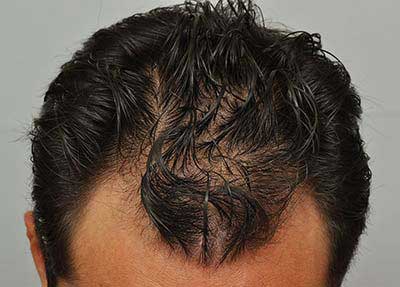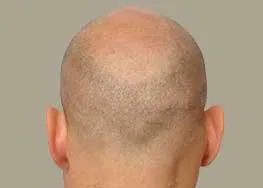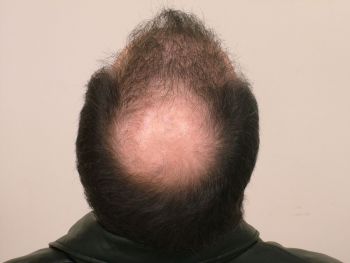FUE HAIR TRANSPLANT PROCEDURE
Hair transplant surgery has come a long way. Once associated with invasive surgeries and heavy scarring, modern hair transplant procedures can be painless, scar less, and more than 97% effective. Patients that had successful results report a boost in their self esteem, success in their work carrier, better relationships and overall they are happier. Some even say that it totally change their lives.
Follicular unit extraction harvests individual strands of hair from donor areas. These, in turn, each go into bald or thinning areas.

FUE hair transplantation Has several advantages over older techniques, including:
- LITTLE OR NO SCARRING
- QUICKER RECOVERY
- MORE NATURAL HAIRLINE
- ZERO HAIR-PLUG APPEARANCE


CIT (COLE FUE)
The Cole Isolation Technique (CIT®) is the Forhair group’s specialized method of Follicular Unit Extraction (FUE).
THIS METHOD HAS SEVERAL ADVANTAGES OVER CONVENTIONAL FUE.
- LITTLE OR NO SCARRING
- GREATER DENSITY
- MORE NATURAL HAIRLINE
CIT® involves extracting transplants of one to four follicles and grafting them to the target area. Stem cells remain intact, maximizing yield. CIT® also has an unshaven variant we call C2G. Application of treatments like ACell, CRP (PRP), and AmnioFix dramatically improve results.
SCALP OR PLUG REPAIR
Repair surgery refers to improving the cosmetics of a previous hair restoration surgery.
Dr. Cole offers every type of hair transplant-related repair. These include:
- STRIP SCAR REPAIR,
- GREATEFUE SCAR REPAIRR DENSITY
- HAIR PLUG REDISTRIBUTION
- HAIRLINE REPAIR
- COBBLESTONING REPAIR
Dr. Cole’s CIT® method can remove plugs and redistribute the hair follicles. This creates a far more natural appearance, particularly at the hairline. Concealing scars through SMP, meanwhile, allows patients to confidently wear buzz-cut hairstyles.




SCAR GRAFTING (REPAIR)
Strip method transplants cause noticeable scarring. Moderate hair length is sometimes unable to cover these scars. Short hair, obviously, is not an option for such patients…until now. Scar grafting is the transplantation of follicles into scar tissue. CIT® is ideal for such procedures:
- NO NEW SCARRING
- EXACT PLACEMENT
- HAIR PLUG REDISTRIBUTION
- 97%+ FOLLICLE SUCCESS RATE
- QUICK RECOVERY
Scar grafting only requires enough transplants to camouflage any sign of a linear scar. ACell and similar treatments help encourage this process.
BODY HAIR (BHT)
CIT® is ideal for most people. Sometimes patients’ viable donor areas, however, lack the prerequisite hair density.
A Body Hair Transplant (BHT) is oftentimes the solution. This method:
- USES ALL FEASIBLE HAIR FROM THE SCALP
- HARVESTS HAIR FROM ANOTHER DONOR SITE
- LAYERS THE TWO HAIR GRAFT TYPES FOR CONVINCING RESULTS
The ratio between scalp and body grafts is essential. Skilled at the procedure, we are particularly careful with BHT. Candidates begin with a test case to estimate the transplant’s growth yield.


MOST CLINICS HAVE LITTLE REASON TO USE ANY OTHER METHOD.
FUE hair transplant, however, also requires significant skill and experience. Specialists must individually extract grafts and transplant them. The procedure requires the entire day, if not multiple sessions. Focus and artistry are vital. Hair density, appearance, and scarring directly relate to the specialist’s skill. Forhair is proud to offer minimal scarring and graft transection rates of under 3%.
.
COLE ISOLATION TECHNIQUE (CIT®) AND STEM CELL GENERATION
FUE research continues advancing forward. None, however, currently compares to Forhair’s premier innovation, Cole Isolation Technique (CIT®). This is the method that creates far less scarring and has a graft success rate of over 97%.
CIT® also leaves stem cells in the donor areas, encouraging regrowth and minimal scarring.
Forhair offers regenerative aftercare too. Application of ACell, CRP (Cole PRP), and other stem cell treatments encourage hair growth and density. This additional care demonstrably encourages hair growth and decreases any chance of scarring.
HAIR TRANSPLANT SURGERY PREPARATION
Planning your hair restoration begins with a consultation. Forhair clinicians excel at analyzing your specific goals and candidacy for procedures. Further, a shared space for discussing your options is often unnecessary. Digital consultations in 720p offer enough visual detail.
Specialists can analyze your hairline and give an accurate estimate of necessary transplants.

Patients must make some pre-op preparations. This prep starts two weeks before the procedure. Most pertain to facilitating recuperation. CIT® requires far less post-op recovery time than FUT (follicular unit transplantation) or other hair transplantation methods. Following pre-op instructions, though, helps ensure that recovery is fast and hassle-free.
- Two weeks before: If possible, stop taking beta-blockers and blood thinners. Ditto for supplements like vitamin E, ginkgo, supplemental ginger, and ginseng. This is also when patients should begin avoiding tobacco.
- One week before: Stop using Rogain or other hair growth treatments unless told otherwise. Also, stop taking anti-inflammatory medicines
- Three days before: Abstain from strenuous exercise and alcohol. If using hair dye then avoid using dye jobs until after the procedure -also scrub your scalp thoroughly.
- The day of surgery: Do not have any caffeine. Wash your hair and avoid using any hair products or body scents. Also, wear a button or zip front -pullovers can disrupt bandages when changing.
Everyone’s hair is unique. We may also have further instructions for pre-op preparation, depending on your procedure. These are often specific to any pre-existing conditions or necessary medication.

THE HAIR TRANSPLANT
PROCEDURE
We do our utmost to ensure your Forhair visit is pleasant. Most of our clients nap, read, or enjoy media entertainment during the procedure. CIT® is relatively painless. However, we will use anesthesia to ensure the procedure is completely comfortable.
FUE procedures can last up to an entire day. The procedure’s duration depends on skill, technique, and graft amount. Forhair often prefers completing your procedure in a single appointment.
Each visit is different, but such procedures can require over eight hours. Don’t worry! We provide refreshments.

POST-SURGERY CARE AND RECOVERY
Recovery from FUE is far simpler than older methods. CIT® has particularly fast recovery time and minimal pain after the procedure. Patients, in fact, can get back to business the very next day. Bandaging also becomes unnecessary the next morning. That mentioned those looking to hit the gym will have to wait a little while. Strenuous activity like exercise is typically possible within two weeks of post-op.
Patients can wash their hair the next morning. Those undergoing stem cell treatments will want to wait 48 hours. Regardless of when you shampoo, be careful. Putting too much force on your scalp can dislodge grafts, decreasing your overall hair density.
THE FUTURE
Forhair continues pushing the envelope. Dr. John Cole continues researching FUE and other exciting techniques. Cole Instruments, meanwhile, offers a wide array of tools and other innovations specialized for CIT®.
Skill matters, but so do utensils. Cole Instruments’ devices prioritize minimal invasion and accuracy, helping ensure quick results and a natural look.
HAIR RESTORATION TREATMENT - FREQUENTLY ASKED QUESTIONS
Yes! Hair restoration treatment has come a long way from its somewhat crude beginnings and hair restoration surgery is currently the only permanent solution for hair loss. Today’s hair transplant surgeons are capable of performing surgical hair restoration treatments that are so natural that they are virtually undetectable from native growing hair. Surgical hair restoration involves removing hair from the back and sides of the head, where the hair is naturally resistant to balding. This hair is then artfully placed in the thinning or balding regions of the scalp. The resulting growth is both natural-looking and permanent.
There is no single formula for determining whether or not you will be a good candidate for hair restoration treatment. The only way to know for sure is to have a consultation with a qualified hair restoration surgeon. He or she will consider such factors as your age, the extent of your hair loss, your family history of hair loss, your expectations, the density and condition of your hair, the contrast between your skin and hair color and various other hair characteristics.
Two of the most respected societies for hair restoration surgeons are the International Association of Hair Restoration Surgeons (IAHRS) and the International Society of Hair Restoration Surgery (ISHRS). Both groups maintain a list of recommended hair restoration surgeons by city and state. The websites of these societies are a good place to start when finding a qualified physician to perform your surgical hair restoration treatment. Once you narrow your list down, spend some time visiting hair loss and hair restoration treatment forums, such as The Bald Truth. You will be able to read first-hand reviews of patient experiences with various hair restoration surgeons. Also, be sure to check out various surgeons’ video and photo results. Look for enlarged, clear images to get a true idea of the quality of their hair restoration treatment work.
There are two main types of surgical hair restoration treatment today: strip and FUE. Strip surgery was first introduced in the nineties and many hair restorations surgeons are still performing this technique today. This method involves removing a strip of tissue from the back of the patient’s head and slivering it into individual follicular units for transplantation. Some of the drawbacks of this method are that it is rather invasive (and can, therefore, be more painful and require additional recovery time) and that it leaves a horizontal linear scar in the back of the patient’s head. These scars have been known to stretch over time and can sometimes be a few centimeters in width.
There are two main types of surgical hair restoration treatment today: strip and FUE. Strip surgery was first introduced in the nineties and many hair restorations surgeons are still performing this technique today. This method involves removing a strip of tissue from the back of the patient’s head and slivering it into individual follicular units for transplantation. Some of the drawbacks of this method are that it is rather invasive (and can, therefore, be more painful and require additional recovery time) and that it leaves a horizontal linear scar in the back of the patient’s head. These scars have been known to stretch over time and can sometimes be a few centimeters in width.
FUE is an alternative and advanced surgical hair restoration treatment that was originally pioneered by Dr. Woods of Australia. This hair restoration treatment does not leave a linear scar on the back of the head, nor does it require the removal of a large strip of tissue or the use of sutures. With FUE, the hair restoration surgeon removes intact follicular units individually and transplants them to thinning or balding regions.
One of the most advanced FUE techniques was created by Dr. Cole about ten years ago. His proprietary method and instrumentation are known as CIT or Cole Isolation Technique. CIT allows him to achieve the most natural-looking results possible for every patient.
Hair Transplant Procedure Timeline The general rule in regard to new growth is that 70% of results happen at 7 months post-op and 80% at 8 months post-op. In approximately 1 year the patient should achieve final results.
The addition of CRP+ACell hastens this growth to 99% in 4.5 months. Our post-op hair transplant growth timeline will show you what to expect in the days and weeks following surgery.

HAIR TRANSPLANT PROCEDURE TIMELINE
Full hair transplant results typically become visible to the patient between 12 to 18 months following the hair transplant procedure. The transplanted hairs need 12 to 18 months to mature and thicken before the final appearance is achieved. The first signs of new hair growth become visible around 4 months but the complete natural results take additional time to develop.
At the ForHair clinic The general rule in regard to new growth is that 70% of results happen at 7 months post-op and 80% at 8 months post-op. In approximately 1 year the patient should achieve final results. The addition of CRP + ACell hastens this growth to 99% in 4.5 months. Our post-op hair transplant growth timeline will show you what to expect in the days and weeks following surgery.
Recipient – Patients are instructed to wash their hair gently so that the scalp is free of any blood.
Donor – Expect some soreness, tightness and possibly some numbness. With FUE, some oozing in the donor area will occur.
Recipient – Scabbing is largely gone. Moderate redness may be present. Some swelling may appear on the forehead. Generally, the patient will have no discomfort in the recipient area.
Donor – Soreness in the donor area begins to disappear. Some numbness may continue
Recipient – Any significant swelling may settle across the bridge of the nose and around the eyes and cheeks.
Donor – In the donor area only, any residual crusting can be removed with directly running shower water
Recipient – Swelling usually has subsided. Redness is faint or absent. The hairs transplanted look and feel like a week-old beard.
Donor – Soreness is generally gone. Rarely, some persistent numbness remains. The donor area is usually healed.
Grafts are firmly in place. Any residual crusting may be gently scrubbed off.
Recipient – The hair grafts are permanently in place and cannot be dislodged. The transplanted hair begins to be shed. Patients may return to normal shampooing, brushing and combing and may get haircuts. Donor – Numbness is uncommon.
The majority of the transplanted hair has been shed.
The follicles enter a resting phase. You will look very much like you did before the procedure. Patients may dye their hair.
The newly transplanted hair starts to grow, initially as very fine hair. Some or all of the original hair that was shed begins to grow back.
Hair is groomable, but it continues to grow and thicken. Slight textural changes in hair are occasionally present.
Patients are seen in follow-up. If a second session is considered, it will be discussed.
Congratulations! The final appearance of the hair transplants can begin to be appreciated.
Additional fullness may appear over time. Any textural change in hair usually returns to normal.
Post-FUE Hair Transplant Care - Instructions
Following your FUE hair transplant, proper aftercare is essential to protect your new grafts and support optimal healing. We’ve prepared a PDF with detailed post-op care instructions to guide you through the crucial hours and days after your procedure.

